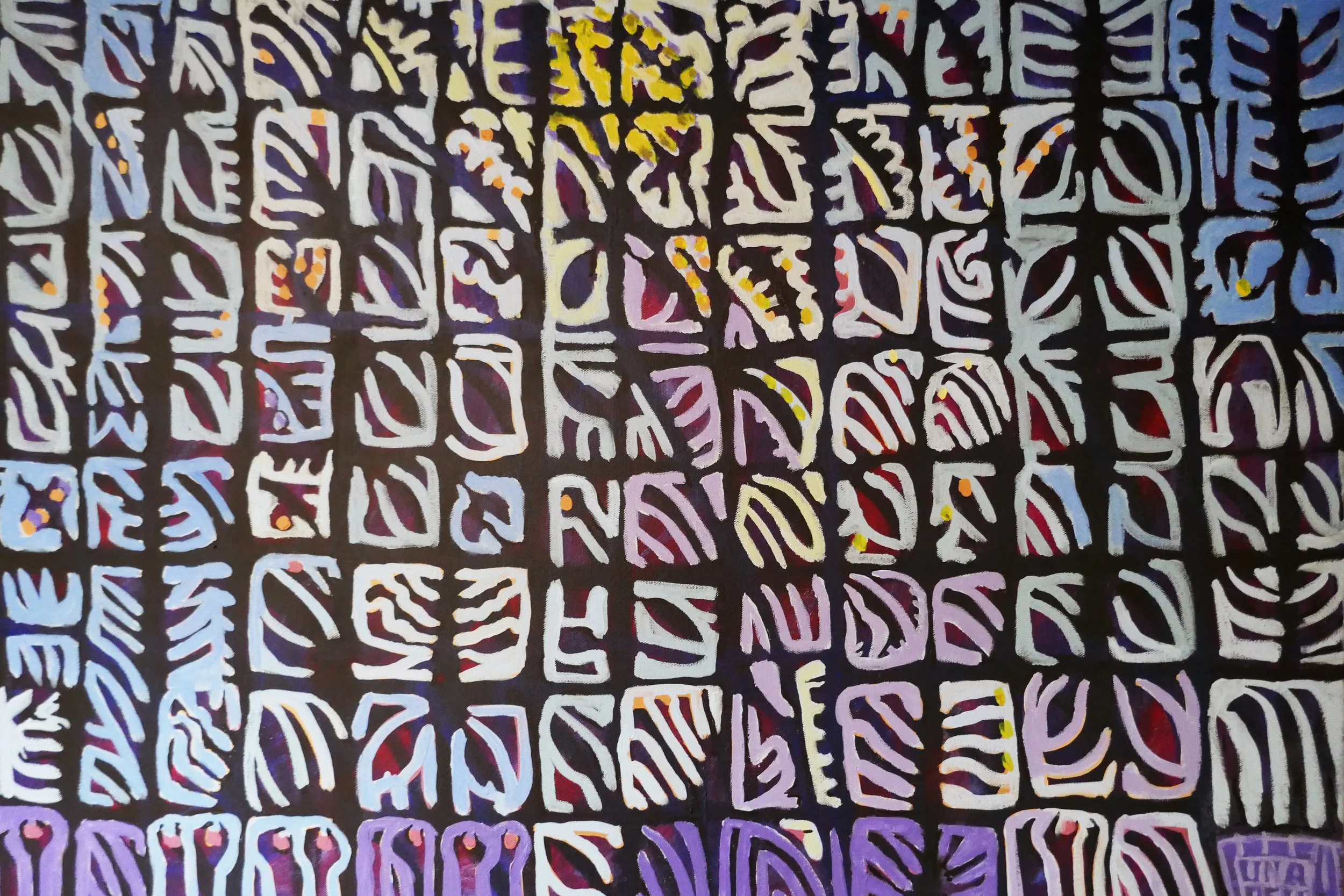Una Bell, Evening Bushland, acrylic on canvas, 2023. Photo courtesy of the artist.
Una Bell
The Tree of Life is an image and a concept that occurs in many different cultures, with different layers of meaning. Traditionally, the Tree of Life is an image of the Garden of Eden. Adam and Eve were expelled from the Garden after eating from the Tree of Knowledge, and realised they were naked. For this transgression, Adam blamed his wife, and Eve blamed the serpent. Once they were expelled, they could not eat from the Tree of Life, which would have made them immortal.
Darwin’s Tree of Life is a diagram of evolution. Species are not fixed but can change and replace earlier forms. As Darwin explains in his work, On the Origin of Species:
As buds give rise by growth to fresh buds, and these, if vigorous, branch out and overtop on all sides many a feebler branch, so by generation I believe it has been with the great Tree of Life, which fills with its dead and broken branches the crust of the earth, and covers the surface with its ever branching and beautiful ramifications.
More recently, phylogenetics has become a scientific quest to produce a map of the interconnectedness of plant forms, also known as the Tree of Life. From an environmental perspective, trees are crucial to our existence on this planet, and support many other life forms. Trees provide food, habitat, protection, shade and shelter. Our two main local native species, the jarrah and the marri, flower in summer when other food sources for wildlife are scarce.
In many ways the Tree of Life is a search for meaning. It places the natural world and ourselves into a context that provides us with an explanation of our place in the universe. The Tree of Life is also a symbol of hope, connecting our past with the future.
24 FEB - 21 Apr 2024
TuE - FRI 10AM - 5PM, SAT 11AM - 3PM


